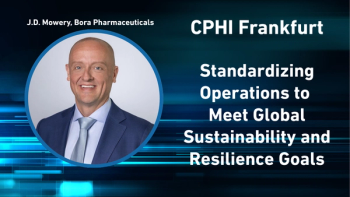
DHS Releases Interim Final Rule on Chemical Site Security
Washington, DC (Apr. 2)-The US Department of Homeland Security released an interim final rule that imposes federal security regulations for high-risk chemical facilities.
Washington, DC (Apr. 2)-The US Department of Homeland Security (DHS,
Under the rule, DHS will require owners of chemical facilities that house certain quantities of specified chemicals to complete a preliminary screening assessment that determines the level of risk associated with the facility. If a chemical facility preliminarily qualifies as high-risk, its owners will be required to prepare and submit a security vulnerability assessment (SVA) and site-security plan. Submissions will be validated through audits and site inspections. The department will provide technical assistance to facility owners and operators as needed. Security standards will be required to achieve specific outcomes such as securing the perimeter and critical targets, controlling access, deterring theft of potentially dangerous chemicals, and preventing internal sabotage.
Facilities contacted by the department will have 120 days from the publication of the regulation in the Federal Register to provide information for the risk-assessment process. Other requirements will follow that time period. Additional facilities will follow a similar timeframe after future Federal Register publications.
Some states have existing laws for regulating chemical facilities. Only state laws and requirements that conflict or interfere with these regulations or the purpose of the regulations will be preempted. DHS says the department currently has no reason to conclude that any existing state laws are applied in a way that would impede the federal rule.
DHS says the final regulation will be published later this week in the Federal Register and also may be found at
SOCMA responds to new rule
The Synthetic Organic Chemical Manufacturers Association (SOCMA, Washington, DC,
“SOCMA wants to commend DHS for their hard work in promulgating these regulations,” said Joe Acker, the group's president, in a prepared statement. “We support the phased-in approach to the rules, but would like to have seen more time given for companies to perform their SVA, especially small companies with limited resources. The shortened timeframe will make it extremely difficult for companies to evaluate the new rules and then perform the appropriate tasks in the prescribed timeframe required by the rule.”
SOCMA pointed out issues relating to the type of facilities able to conduct alternative SVAs. “DHS’s decision to limit alternative SVAs to only Tier 4 facilities is disappointing,” said Acker. “Facilities that have taken the proper action over the last five years, which include all of SOCMA’s member facilities, will need to unnecessarily reconduct risk assessments, even though nothing has changed in their overall risk profiles.”
Under the rule, DHS places facilities in one of four risk-based tiers, ranging from Tier 1, which contains the highest-risk covered facilities, to Tier 4, which contains the lowest-risk covered facilities.
SOCMA also raised concerns about the possible omission of certain risk-reduction measures in DHS guidance. “SOCMA understands and supports DHS’s intent to use guidance for assisting facilities in meeting the new security standards,” said Acker. “SOCMA expects that many risk-reduction measures that could be taken by facilities will not be captured in the guidance. These risk-reduction measures should be given the same consideration as measures found in the DHS guidance materials.”
Newsletter
Get the essential updates shaping the future of pharma manufacturing and compliance—subscribe today to Pharmaceutical Technology and never miss a breakthrough.





